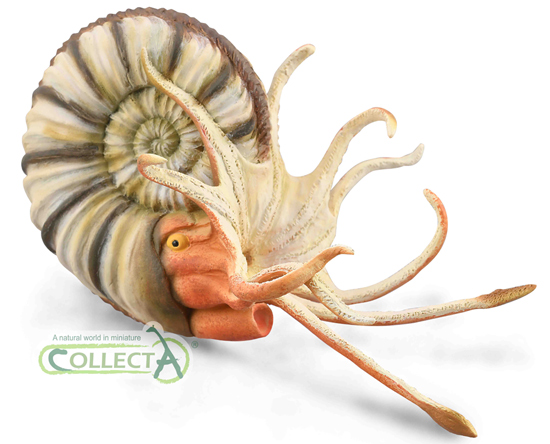Sudden Fall in Northern Sea Temperatures Started Dinosaur Extinction
A sudden and dramatic fall in sea temperatures, triggered by the melting of polar ice in northern latitudes started the demise of the dinosaurs and other mega fauna at the beginning of the Cretaceous claim British scientists.
In a scenario somewhat reminiscent of the 2004 film “The Day After Tomorrow”, directed by Roland Emmerich in which a palaeoclimatologist predicts an Ice Age following the impact of global warming leading to the melting of the polar ice caps, the British researchers claim that a similar event occurred approximately 137 million years ago (Valanginian faunal stage).
The team studied fossils of marine organisms and mineral deposits from the Arctic Svalbard of Norway and they conclude in a scientific paper, that the sea temperatures dropped some 16F. (9 Celsius) and this sudden climate change began the demise of many of the sea creatures and land animals around at the time. This study claims that the change in the young Atlantic’s Gulf Stream during the early Cretaceous would almost have certainly have wiped out the “abundance” of the world’s dinosaurs.
Small extinction events occur throughout the fossil record, these are triggered by environmental and/or climatic changes, although for the Dinosauria the Early Cretaceous saw an increase in their diversity, particularly amongst the ornithischians (bird-hipped dinosaurs). It is certainly true that virtually all the non-avian dinosaurs become extinct along with many types of marine reptile and the pterosaurs at the very end of the Cretaceous.
Several Theories
A number of theories have been put forward to explain this mass extinction event at the very end of the Mesozoic, perhaps the most widely accepted theory is the impact of an extra-terrestrial body in the Gulf of Mexico that triggered the extinction of something like 70% of all species on Earth.
At the 41st meeting of the Lunar and Planetary Science Conference in Texas in March this year, a paper was presented that attempted to end all the debate over what exactly caused the demise of the Dinosaurs 66 million years ago. The impact of an extra-terrestrial object was stated as being the number one cause – naturally, this has led to extensive debate.
To read more about the paper presented at the Conference: Extra-terrestrial Impact Did Cause the end Cretaceous Mass Extinction.
This new research suggests that mega fauna such as the dinosaurs were wiped out by a series of environmental changes starting with a drop in sea temperatures. Such a dramatic fall in sea temperatures would have had a serious impact on fauna and flora. The common perception is that the Cretaceous period had a uniform, and constant environment. This is not the case, a rapid rise in atmospheric carbon dioxide at the beginning of the Cretaceous may have led to extensive global warming but from earlier studies on zonal fossils and mineral deposits it seems that for much of the Cretaceous there was a fluctuation between hot and relatively cold periods every two million years or so.
Dinosaur Extinction
Pictures show the fossilised impression of an Ammonite (Lytoceras?), the strong ribs of this fossilised shell of this Cephalopod can be clearly made out at the top of the fossil. A Norwegian coin has been placed next to the fossil to give scale.
A Model of an Ammonite
To view the range of CollectA Age of Dinosaurs Popular: CollectA Age of Dinosaurs Popular Size Models.
Scientist Gregory Price, from Plymouth University (United Kingdom), who led the study stated that his team’s work showed the drop in temperature occurred when the Earth was in a “greenhouse” climate, which was very similar to the climatic phase seen today.
The team concluded that the drop in sea temperatures was so severe that this would have had an enormous impact upon, not only marine creatures such as ammonites but also many species of dinosaur and other large animal previously living in warm coastal areas would have been affected.
Paul Gregory commented:
”We believe dinosaurs were most likely to be cold-blooded creatures and would have needed the warmth to keep them alive. If they were unable to migrate south they could have been wiped out. Climate change is now very much on the agenda in trying to determine how the dinosaurs became extinct. We now believe that they died out gradually and it is very possible that this could have been caused by a series of climatic changes.”
The drop in temperature is thought to have occurred because high levels of carbon dioxide was in the atmosphere this caused global temperatures to rise and polar ice to melt – a phenomenon currently predicted for Earth, so what may have happened to some of the dinosaurs may be about to happen to the mammals, including one particularly highly evolved species of ape – us.







Leave A Comment